

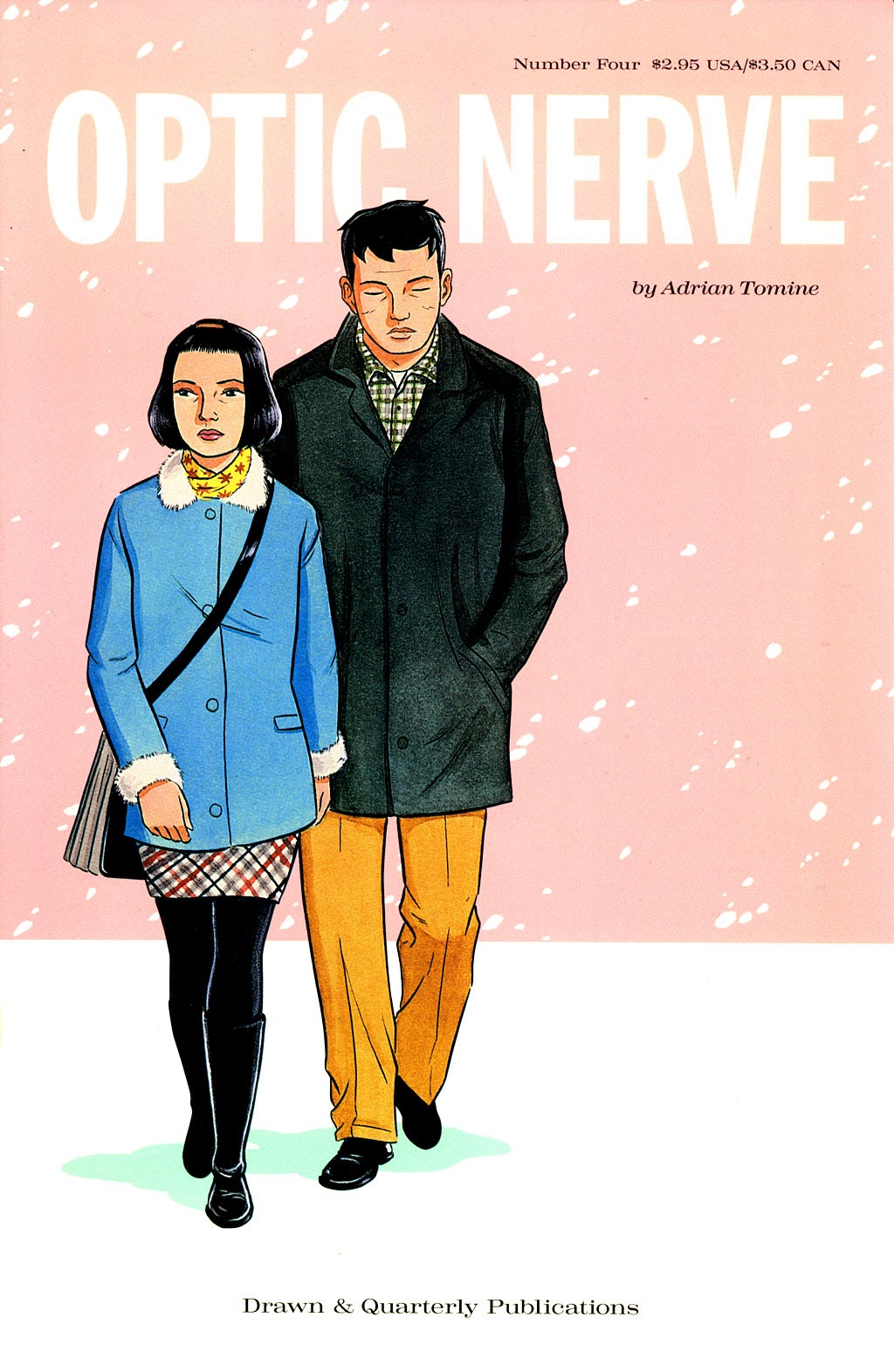
Books in series

#1
Optic Nerve #1
2000
"Great art and a soft, smooth page that's slick to the touch...reading Optic Nerve is like peeking into someone's diary or flipping through your favorite photo album." —New York Daily News
After self-publishing seven mini comics as a teenager, Optic Nerve became a regular comic book series when Adrian Tomine was only 20. His work developed steadily over the years, from the rough, sketchy drawings of his early mini-comics to the stark, crisp graphic approach of his D&Q series. Although his work is no longer strictly autobiographical, his contemporary stories are still deeply personal. Tomine creates a new cast of characters for each story, and he has become a master of penetrating their fragile exteriors.
This first D+Q issue features five stories: "Sleepwalk" (11 pages), an account of a young man's attempts to cling to an old, fading relationship; "Echo Avenue" (5 pages), where voyeurism is the pastime of choice as a couple peers into their neighbor's bedroom window; "Long Distance" (2 pages), a brief, powerful story about a woman's cold, distant conversations with her boyfriend; "Drop" (1 page), an account of an unfortunate incident by the author's father; and "Lunch Break" (5 pages), where a solitary elderly woman thinks back to happier times in the 1950's.

#2
Optic Nerve #2
2000
Compelling somewhat autobiographic black and white comic book

#4
Optic Nerve #4
1996
Three stories are featured here: in Six Day Cold (11 pages), a man spends a tense, awkward evening with his ex-girlfriend after she comes over to his apartment to help nurse his sickness; "Fourth of July" (7 pages) recounts the story of a young boy who isolates himself as his parents are being separated; in "Hazel Eyes" (6 pages), a young woman tries to recreate her life after she realizes she has nothing in common with her friends.
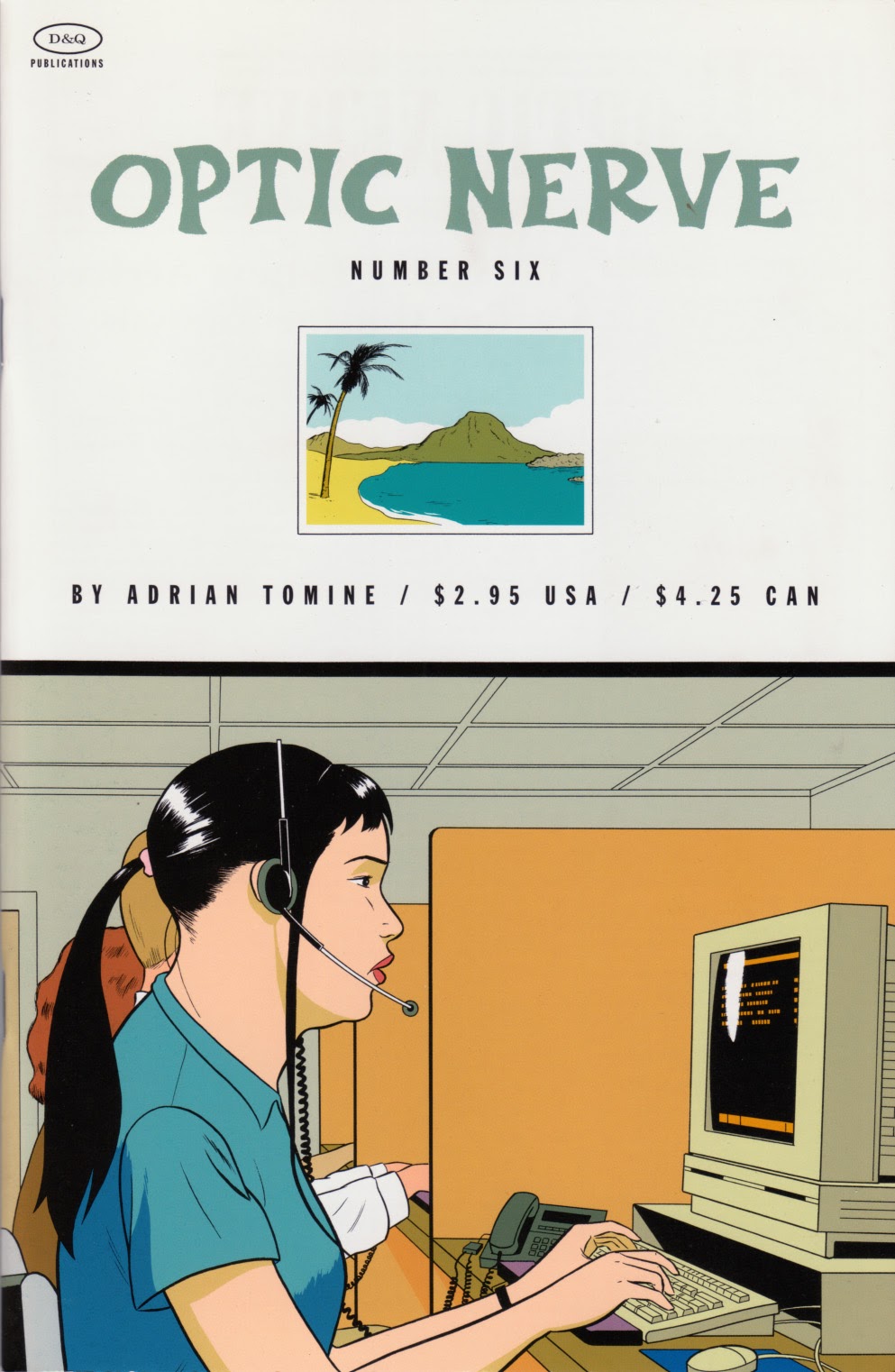
#6
Optic Nerve #6
2000
Adrian Tomine's iconic comic series, Optic Nerve, is once again available in new printings. Each issue features a selection of short tales, some slice-of-life, some powerful meditations on life, family, and relationships.
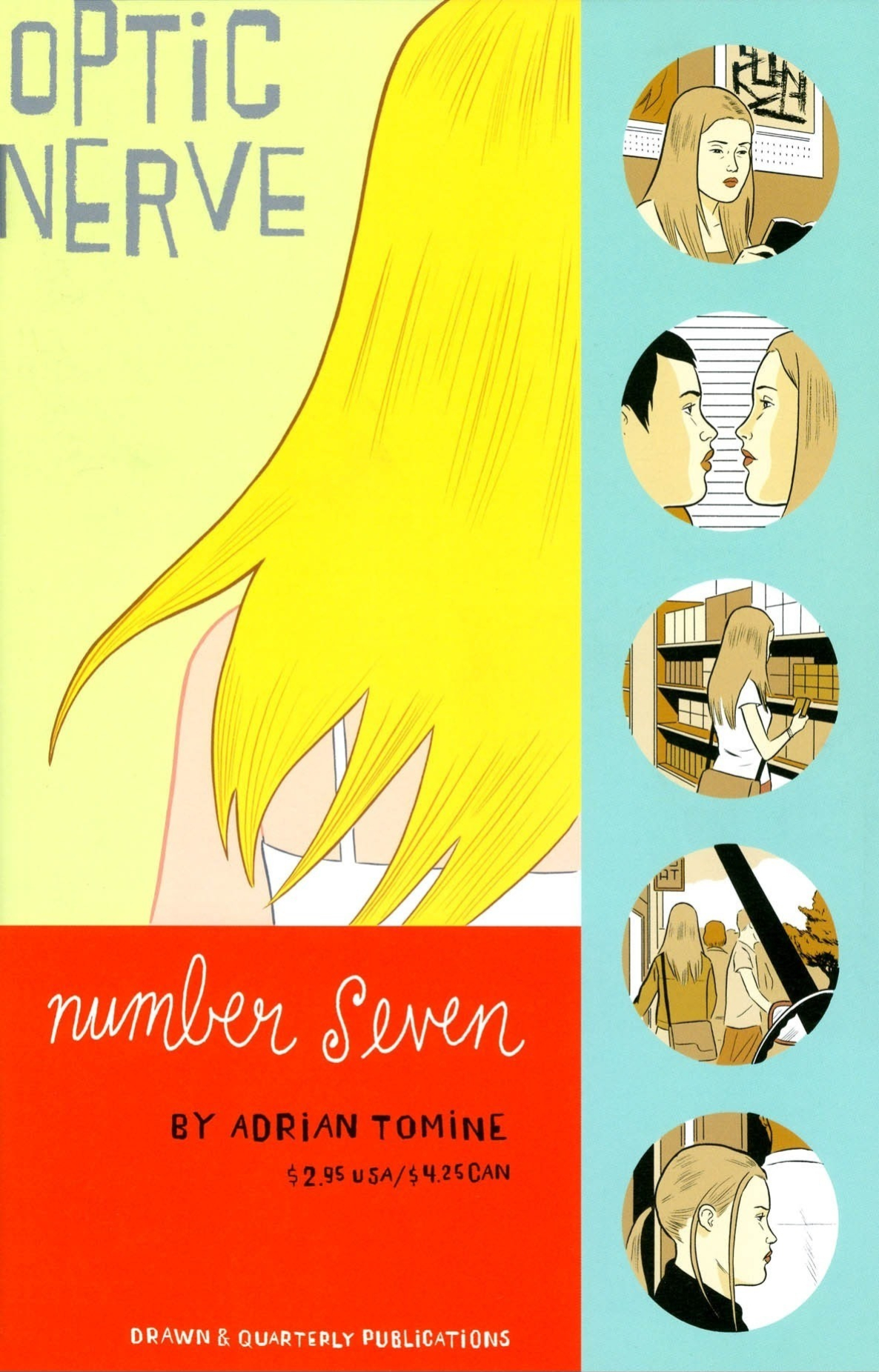
#7
Optic Nerve #7
2000
compelling and somewhat autobiographic black & white comic book
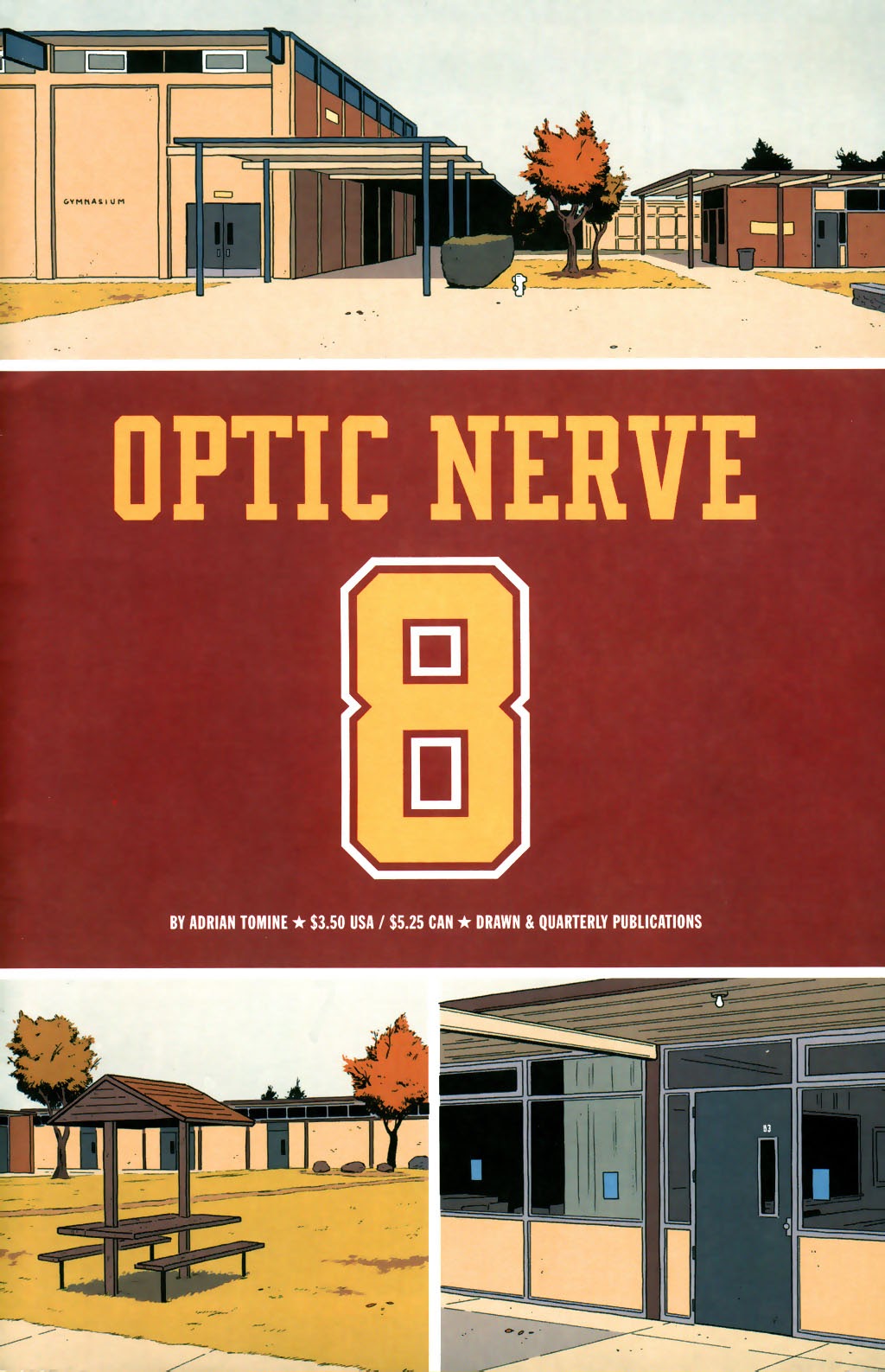
#8
Optic Nerve #8
2001
In this issue of the great small press black & white comic book, Tomine tells the story of two outcast teenagers and of the tense undercurrents that exist between them and the more popular group of students at school. This is the story that Dave Eggers chose to be included in the book "The Best American Non-Required Reading."

#9
Optic Nerve #9
2004
This remarkably illustrated collection of postcards features the best of Tomine's distinctive, critically acclaimed Optic Nerve comic book series, as well as selections from his work for magazines such as The New Yorker, album covers, and more. Share these 30 different postcards or keep them all to yourself.
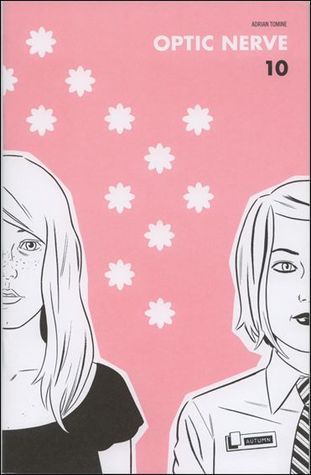
#10
Optic Nerve #10
2005
Acclaimed black & white comic book
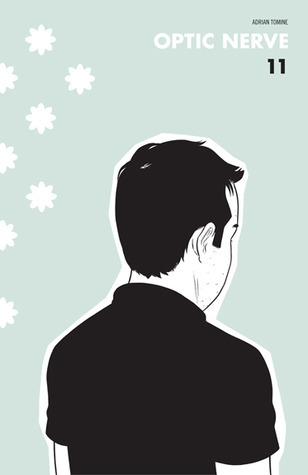
#11
Optic Nerve #11
2007
Acclaimed small press comic which started as a duplicated flyer, and evolved into one of the most successful alternative black and white comic books
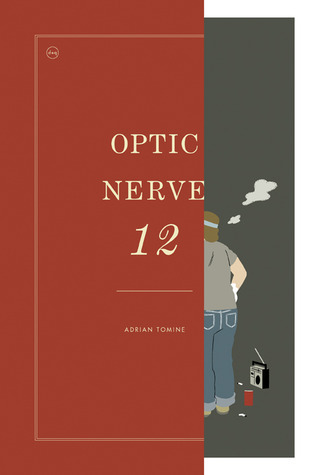
#12
Optic Nerve #12
2011
In the new, long-awaited Optic Nerve #12, award-winning Shortcomings cartoonist Adrian Tomine returns to the multiple short story format familiar from early issues of the iconic series. These full-color stories showcase Tomine’s trademark humor and observational skill, making Optic Nerve #12 a great entry point for new readers. “A Brief History of the Art Form Known as Hortisculpture” deftly manipulates traditional comics idioms to tell a story of horticulture, patents, and misunderstood art forms, while "Amber Sweet" is a disconcertingly modern tale about a case of mistaken identity.
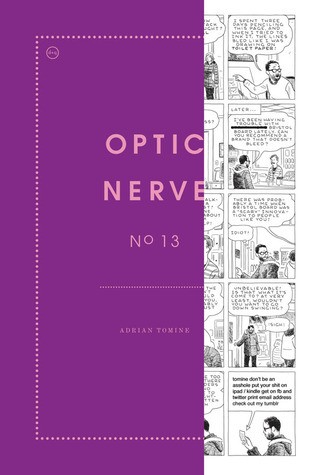
#13
Optic Nerve #13
2013
Optic Nerve #13 contains: "Go Owls" is a dark comedy about 12-step programs, drug dealing, and minor league baseball. "Translated, from the Japanese" is the diary of a young Japanese mother caught between her home country and a new, strange land, and hovering on the precipice of divorce. And "Winter, 2012", is an autobiographical glimpse into Tomine's home life and his ongoing struggles with the modern world.

#14
Optic Nerve #14
2015
"Optic Nerve 14 brings Adrian Tomine’s multifaceted, expressive cartooning to a new peak with two stories and a bonus autobiographical strip. “Killing and Dying” is about a father’s struggles to be supportive: it centers on parenthood, mortality, and stand-up comedy. “Intruders” depicts a man obsessively trying to find his way back to a former life by revisiting places he once knew."—Drawn & Quarterly.

#15
32 Stories
The Complete Optic Nerve Mini-Comics
1995
In 1991, Adrian Tomine self-published the first issue of Optic Nerve. Consisting of three xeroxed sheets of paper, and with a print run of twenty-five, it was a less-than-auspicious, largely unnoticed debut. In the following three years, though, Optic Nerve developed at a startlingly rapid pace: the artwork and writing evolved with each story, production quality improved, page counts increased, and by issue seven, sales had reached 6,000. In 1994, Drawn & Quarterly took over the publishing duties of Optic Nerve, and the original seven issues sold out and were left out of print. 32 stories presents these rare, early editions, collected for the first time in a single volume.
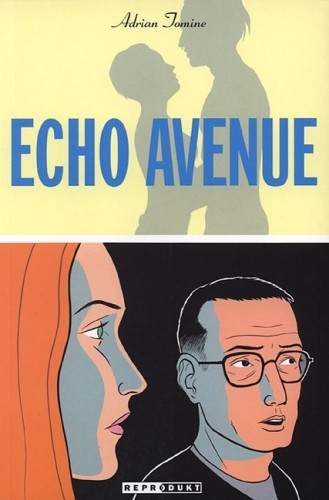
#20
Echo Avenue
1996
Adrian Tomine gilt als eines der grössten Talente der jungen amerikanischen Comic-Szene. "Echo Avenue" präsentiert eine Auswahl seiner Geschichten aus der Heftreihe "Optic Nerve". Mit seinem klaren, äshtetischen Stil schildert er Situationen, in denen der Alltag Risse und Sprünge bekommt. Die Erzählungen sind fein nuanciert, melancholisch und wunderschön.

#1-4
Sleepwalk and Other Stories
1997
Collecting the first four issues of Adrian Tomine's acclaimed comic series optic nerve, this book offers sixteen concise, haunting tales of modern life. The characters here appear to be well-adjusted on the surface, but Tomine takes us deeper into their lives, subtly examining their struggle to connect with friends and lovers.

#5-8
Summer Blonde
2003
Adrian Tomine's cult comix series Optic Nerve is finally collected into one sharp-looking hardcover volume. Described as the Raymond Carver of comix, Tomine constructs tales of emotional disconnection with an ear for painfully real dialogue. Combined with his deft black and white depictions of urbane lifestyles, Tomine's fans have often accused him of eavesdropping in on their most intimate moments and, with forensic skill, laying their lives bare. The conflicts between emotional gratification, narcissistic neediness and moral discernment mark the title story in which a socially crippled man nurses an obsessive crush on a young woman. He watches close up, paralyzed by his guilt, as her beauty catches the eye of his neighbor: a hip, selfish young man with a short attention span. One of Optic Nerve's most popular stories, \`Hawaiian Getaway,\` features Hilary, telephone service rep who is having the worst week of her life. She lost her job, her apartment, and her grandmother. Close to the edge, she is losing her grip. Reaching out to random strangers on the phone, Hilary is looking for someone to help her. In "Alter Ego" a successful young author has writer\`s block. He can\`t, or won\`t, decide between another ghostwriting gig and finishing his second "real" novel. He stalls on committing to his novel and his girlfriend when a chance postcard leads him to flirt with fantasies of changing the past. Finally, "Bomb Scare" documents the early unease of his generation by setting this coming-of-age story during the tense months of the Gulf War, the event that ushered in the 1990s.

#9-11
Shortcomings
2007
Shortcomings, Adrian Tomine's first long-form graphic novel, is the story of Ben Tanaka, a confused, obsessive Japanese American male in his late twenties, and his cross-country search for contentment (or at least the perfect girl). Along the way, Tomine tackles modern culture, sexual mores, and racial politics with brutal honesty and lacerating, irreverent humor, while deftly bringing to life a cast of painfully real antihero characters. A frequent contributor to The New Yorker, Tomine has acquired a cultlike fan following and has earned status as one of the most widely acclaimed cartoonists of our time.
Shortcomings was serialized in Tomine's iconic comic book series Optic Nerve and was excerpted in McSweeney's Quarterly Concern #13.

#12-14
Killing and Dying
2015
"\[Adrian Tomine\] has more ideas in twenty panels than novelists have in a lifetime.” ―Zadie Smith
After enjoying over six months on the New York Times Bestseller list and receiving a rave review from the same institution, acclaimed cartoonist Adrian Tomine’s Killing and Dying is now available in paperback, with an updated cover and French flaps. With this work, Tomine ( Shortcomings, Scenes from an Impending Marriage ) reaffirms his place not only as one of the most significant creators of contemporary comics, but as one of the great voices of modern American literature. His gift for capturing emotion and intellect the weight of love and its absence, the pride and disappointment of family, the anxiety and hopefulness of being alive in the twenty-first century.
“Amber Sweet” shows the disastrous impact of mistaken identity in a hyper-connected world; “A Brief History of the Art Form Known as Hortisculpture” details the invention and destruction of a vital new art form; “Translated, from the Japanese,” is a lush, full-color display of storytelling through still images; the title story, "Killing and Dying," centers on parenthood, mortality, and stand-up comedy. In six interconnected, darkly funny stories, Tomine forms a quietly moving portrait of contemporary life.
Adrian Tomine is a master of the small gesture, equally deft at signaling emotion via a subtle change of expression or writ large across landscapes illustrated in full color. Killing and Dying is a fraught, realist masterpiece.
Author

Adrian Tomine
Author · 24 books
Adrian Tomine was born in 1974 in Sacramento, California. He began self-publishing his comic book series Optic Nerve. His comics have been anthologized in publications such as McSweeney’s, Best American Comics, and Best American Nonrequired Reading, and his graphic novel "Shortcomings" was a New York Times Notable Book of 2007. His next release, "Killing and Dying" will be published by Drawn and Quarterly in October 2015. Since 1999, Tomine has been a regular contributor to The New Yorker. He lives in Brooklyn with his wife and daughters.